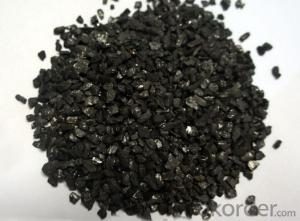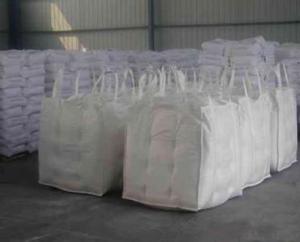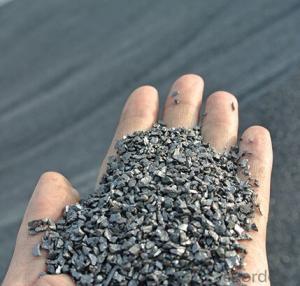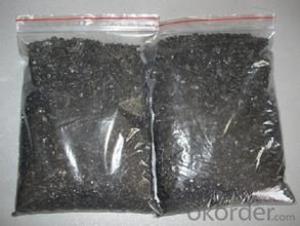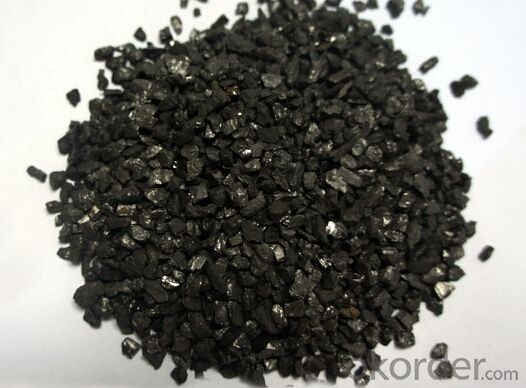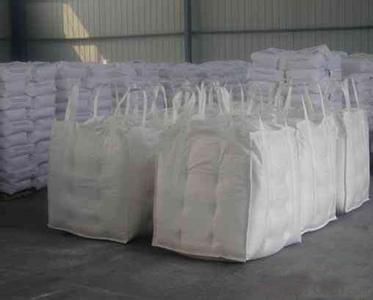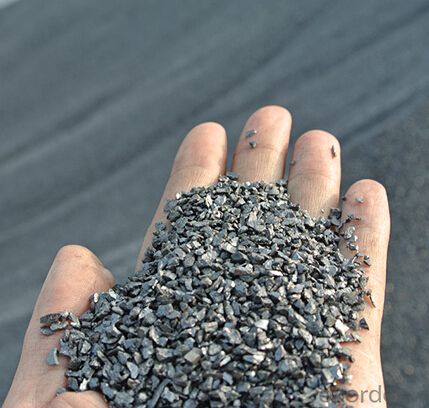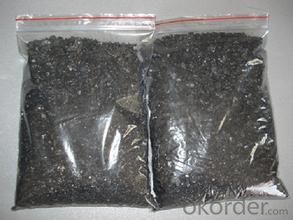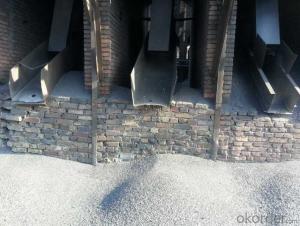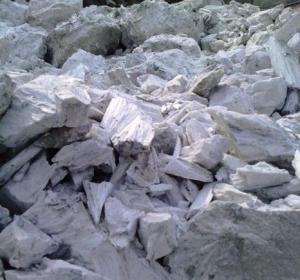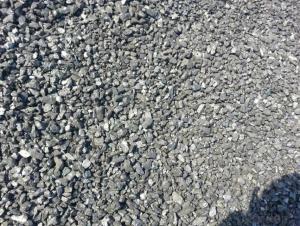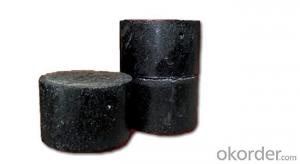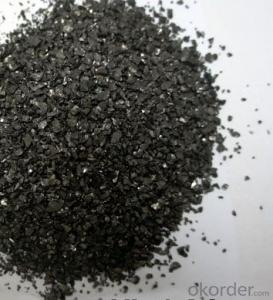Recarburizer 5-8mm 90% FC Carburant Carbon Additives
- Loading Port:
- Qingdao
- Payment Terms:
- TT OR LC
- Min Order Qty:
- 10 m.t.
- Supply Capability:
- 50000 m.t./month
OKorder Service Pledge
OKorder Financial Service
You Might Also Like
Specifications Of Recarburizer 90% FC
- High C content;
- Low S and N content;
- High abosorbility;
Recarburizer(Carburant, carbon additives) with high quality,0-20mm for metal casting foundry and steel plant, low nitrogen content and high carbon content, min 90% carbon content, at the same time as your requirements with no problem. The best media for adding carbon.
Technical Data Sheet of Recarburizer 90% FC
Fixed carbon | ≥ 90.5% |
Ash content | ≤ 8.0% |
Vol . Matter | ≤ 1.0% |
Sulphur content | ≤ 0.3% |
Moisture content | ≤ 0.3% |
Size | 0-20mm or as your requirement. |
Packing | - 25kg bag - One tone bags, Jumbo bag |
Delivery time | In 5-10 working days or depends on the order quantity |
Supply ability | 50000 Metric Ton Per Month |
Payment terms | L/C at sight or T/T |
Available Size: 0,1-4mm, 1-5mm, 3-8mm, 8-20mm (as per customers’ requirements)
Usage: widely used in casting foundry, steel-making, metallurgical Etc.
Applications of Recarburizer 90% FC
Mainly used in steel making in electrical stove, screening water, ship building sandblast to remove rust,producing carbon materials Etc.
Characteristics of Recarburizer 90% FC
- Particle size, porosity, absorption speed stable
- High degree of carbonize product, increase the original nuclear capability in the shape of liquid iron.
- Increased in the inoclation of nodular cast iron ball ink quantiyt, increase in th electric furnace iron graphit crystal nucleus.
- Excellent performance, stable.
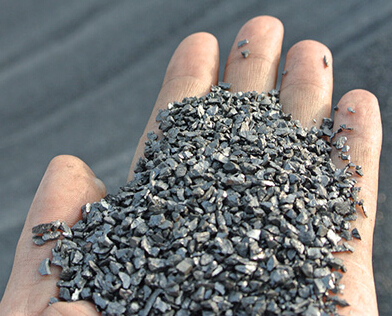

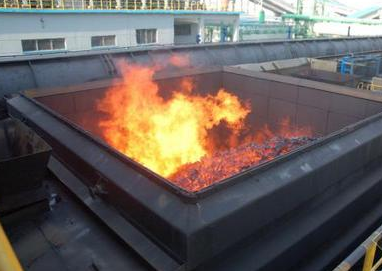
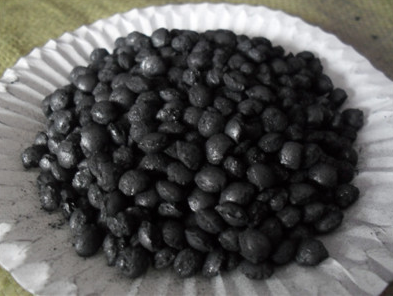
- Q: What is carbon neutral shipping?
- Carbon neutral shipping refers to the concept of offsetting or balancing out the carbon emissions produced during the transportation of goods by sea, air, or land. It aims to minimize the negative impact of shipping on the environment and climate change. Shipping contributes to greenhouse gas emissions through the burning of fossil fuels, primarily through the use of heavy fuel oil in ships' engines. This results in the release of carbon dioxide (CO2), nitrogen oxides (NOx), sulfur oxides (SOx), and particulate matter into the atmosphere, contributing to global warming and air pollution. To achieve carbon neutrality in shipping, various strategies can be employed. One of the most common approaches is the use of carbon offsetting. This involves investing in projects that reduce or remove an equivalent amount of CO2 from the atmosphere, such as reforestation, renewable energy projects, or methane capture initiatives. By supporting these projects, the carbon emissions from shipping are balanced out, resulting in a net-zero carbon footprint. Another method to achieve carbon neutrality is through the use of alternative fuels and energy-efficient technologies. For instance, biofuels, hydrogen, and electric propulsion systems can significantly reduce or eliminate carbon emissions from ships during their operation. Additionally, optimizing shipping routes and vessel design can also contribute to reducing fuel consumption and emissions. Furthermore, collaboration between shipping companies, governments, and international organizations is essential to promote carbon neutral shipping. This includes setting industry-wide emission reduction targets, implementing stricter regulations, and providing incentives for sustainable practices. While carbon neutral shipping is a positive step towards mitigating climate change, it is important to acknowledge that it should be seen as a transitional measure towards achieving a fully decarbonized shipping sector. Continued research and development in clean technologies, along with the adoption of sustainable practices, are crucial to achieving long-term environmental sustainability in the shipping industry.
- Q: What is the effect of carbon equivalent on welding?
- The greater the carbon equivalent, the greater the tendency to harden the welding material, and the cold crack is likely to occur in the welding area.Carbon equivalent is related to hardening and cold crack tendency due to welding heat:When the carbon equivalent is large, the martensite structure which is easy to harden in the welding heat affected zone is sensitive to crack and hydrogen quenching. Hardening causes more lattice defects. In the condition of stress and thermal imbalance in the weld, the lattice defect is called the crack source, which increases the tendency of cold crack in the weld.
- Q: How is carbon used in the production of steel?
- Carbon is added to iron ore during the steel production process to increase its strength and hardness. By combining with iron, carbon forms a solid solution, creating a material stronger than pure iron. The amount of carbon added determines the steel's properties, making it suitable for various applications such as construction, automotive, and machinery.
- Q: How do plants use carbon dioxide?
- Plants use carbon dioxide through a process called photosynthesis, which is vital for their survival. During photosynthesis, plants take in carbon dioxide from the air through small openings on their leaves called stomata. Inside the leaves, carbon dioxide combines with water, which is absorbed by the roots, to produce glucose and oxygen. The glucose is used by the plant as a source of energy to carry out various metabolic processes and to grow. Additionally, plants store excess glucose in the form of starch for future use. The oxygen produced during photosynthesis is released back into the atmosphere, which is crucial for the survival of other living organisms, including humans, as we depend on oxygen for respiration. Therefore, plants play a crucial role in maintaining the balance of carbon dioxide and oxygen in the atmosphere, making them essential for life on Earth.
- Q: How are carbon nanotubes used in various applications?
- Carbon nanotubes are incredibly versatile and have found numerous applications across various fields. In electronics, carbon nanotubes are used as an alternative to traditional silicon-based materials, enabling the development of smaller, faster, and more efficient devices. They can be used as the building blocks for transistors, interconnects, and memory devices. In the field of energy, carbon nanotubes are being explored for their potential in improving the performance of batteries and supercapacitors. Their high electrical conductivity and large surface area make them ideal for enhancing energy storage and facilitating faster charge and discharge rates. Carbon nanotubes also have applications in the field of materials science. They can be incorporated into composites to enhance their strength, stiffness, and electrical conductivity. These composites find use in aerospace, automotive, and construction industries, where lightweight and durable materials are sought after. Additionally, carbon nanotubes are being investigated for their potential in the field of medicine. Due to their unique properties, they can be utilized for drug delivery systems, sensors, and imaging technologies. They have the ability to selectively target cancer cells, enabling more efficient and targeted treatment options. In summary, carbon nanotubes have an extensive range of applications, including electronics, energy storage, materials science, and medicine. Their remarkable properties make them highly desirable for enhancing performance and enabling advancements in various industries.
- Q: What is latent carbon?
- With prochiral carbon atoms called prochiral molecules.For potential chiral compounds, can also be used to determine the order of rule configuration. For example, an atom of hydrogen by deuterium methylene propionate (D) replaced, if converted into R configuration, the hydrogen atom is called latent -R (pro-R) hydrogen atoms into S; if the configuration is called latent -S (pro-S the hydrogen atom).For medical workers, prochiral is an important concept. Almost all of the biological chemical reaction is controlled by the enzyme, the enzyme for prochiral molecules not symmetrically reaction, so they are able to identify two identical atoms or atomic groups, because they are chiral compounds. For example two methylene citric acid and only one methylene by enzymes (from rat liver) into carbonyl group.
- Q: What is carbon offsetting in the travel industry?
- Carbon offsetting in the travel industry refers to the practice of compensating for the carbon emissions produced during travel activities by investing in projects that reduce or remove an equivalent amount of greenhouse gases from the atmosphere. As travel contributes significantly to global carbon emissions, carbon offsetting has emerged as a way for individuals and businesses to take responsibility for their environmental impact and strive towards more sustainable practices. When individuals or companies choose to offset their travel emissions, they calculate the carbon footprint of their trip based on factors like distance traveled, mode of transport, and fuel consumption. This calculation helps determine the amount of carbon dioxide equivalent emitted during the journey. To offset these emissions, they then invest in projects that reduce or remove the same amount of greenhouse gases from the atmosphere, such as renewable energy projects, reforestation efforts, or energy efficiency initiatives. The concept of carbon offsetting aims to achieve carbon neutrality, where the emissions produced are balanced by an equivalent reduction or removal of emissions elsewhere. By investing in offset projects, travelers and travel companies can effectively mitigate their environmental impact and contribute to overall efforts in combating climate change. Carbon offsetting in the travel industry not only helps reduce the carbon footprint of individual trips but also encourages the development of sustainable practices within the tourism sector. It provides travelers with the opportunity to minimize their environmental impact by supporting projects that promote renewable energy, conserve biodiversity, or improve local communities' livelihoods. However, it is essential to ensure that carbon offset projects are credible and deliver genuine emission reductions. Verified standards and certifications, such as the Gold Standard or Verified Carbon Standard, help ensure the integrity and transparency of offset projects. It is also important to prioritize efforts in reducing emissions directly, such as using more fuel-efficient transportation or opting for low-carbon alternatives, before relying solely on offsetting. In conclusion, carbon offsetting in the travel industry allows individuals and businesses to take responsibility for their carbon emissions by investing in projects that reduce or remove greenhouse gases. It is a proactive approach towards minimizing the environmental impact of travel and promoting sustainable practices within the tourism sector.
- Q: How is carbon used in the production of fuels?
- Fuels production heavily relies on carbon, which serves as the primary element in fossil fuels like coal, oil, and natural gas. These fuels are formed through the decomposition of ancient plants and animals over millions of years, a process called carbonization. Carbonization involves subjecting organic materials to prolonged exposure to high temperature and pressure, resulting in the formation of hydrocarbon-rich substances. For instance, coal consists mainly of carbon, with traces of other elements. When coal is burned, the carbon reacts with oxygen, releasing heat energy. This heat can be utilized to generate steam, which then powers turbines for electricity production or industrial engines. Similarly, oil and natural gas, which are predominantly carbon-based, are extracted from underground reservoirs. These hydrocarbons can undergo refining to produce various fuel types such as gasoline, diesel, and jet fuel. The combustion of these fuels in engines or power plants releases energy for transportation and electricity generation. Aside from fossil fuels, carbon plays a crucial role in the production of alternative fuels like biofuels. Biofuels are derived from renewable sources such as plants, algae, or agricultural waste. The carbon within these organic materials can be converted into ethanol or biodiesel through processes like fermentation or transesterification, respectively. These biofuels can then be used as substitutes for conventional fuels, reducing greenhouse gas emissions and lessening reliance on non-renewable resources. In conclusion, carbon is a vital component in fuel production, whether obtained from fossil fuels or renewable sources. Its combustion generates energy that powers various sectors including electricity, transportation, and industry. Nevertheless, it is crucial to explore and adopt sustainable alternatives like biofuels and renewable energy sources to mitigate the negative environmental impacts associated with carbon emissions.
- Q: How can Dungeon Fighter Online's superior furnace rock carbon be obtained?
- DNF advanced furnace carbon can acquire rock at the mall, priced at 450 points and 50 points 10 coupon coupon 1.The role is to use advanced furnace rock carbon can start at the Kylie advanced equipment reinforcement machine, strengthen the probability of success is greater!Point Keri election advanced strengthening, plus ten or more equipment to strengthen, the probability is 10% more than ordinary furnace carbon
- Q: other parameters are figured out, the difference is only in the carbon and carbon is not very clear, just know that they are winding mode is the opposite, there are two kinds of most printers can be used, what is the difference between the performance of them? Two can use the printer in the selection of the best carbon or carbon? Why? Please cite several models as an example.Please answer in your own words. Don't factor,
- In fact, to teach you a simple way to distinguish between internal and external carbon, carbon, label paper dip ribbon, with black on the outside of the outer side is carbon, carbon is in inside, no performance difference, now generally used is the most carbon, such as the machine is to use carbon is better, because the wound is not the same, sometimes loose.
Send your message to us
Recarburizer 5-8mm 90% FC Carburant Carbon Additives
- Loading Port:
- Qingdao
- Payment Terms:
- TT OR LC
- Min Order Qty:
- 10 m.t.
- Supply Capability:
- 50000 m.t./month
OKorder Service Pledge
OKorder Financial Service
Similar products
Hot products
Hot Searches
Related keywords
